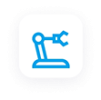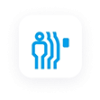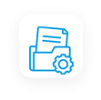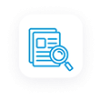Industrial automation is evolving rapidly, with robots, automated guided vehicles (AGVs), and other autonomous systems becoming essential for efficiency. However, as these technologies integrate more deeply into warehouses, manufacturing plants, and logistics hubs, the risk of collisions and safety incidents increases—especially in environments where humans and machines share the same workspace.
To mitigate these risks, industries rely on safety laser scanners—a crucial component of modern proactive collision avoidance systems. These devices create protective zones, detect obstacles, and trigger warnings or system shutdowns to prevent accidents before they occur.
The Dangers of Blind Spots in Industrial Automation
Industrial robots and AGVs operate with precision and efficiency, but they often have limited situational awareness. Even with cameras and other detection methods, blind spots remain a significant hazard, increasing the potential for:
- Collisions with stationary objects such as racks, machinery, or structural barriers
- Accidental human-robot interactions due to unpredictable movement
- Equipment damage and downtime caused by unintended impacts
- Legal and compliance issues if safety measures are insufficient
Safety laser scanners address these risks by providing a wide field of view for monitoring, ensuring that no blind spots are left unchecked.
How Safety Laser Scanners Prevent Collisions
Hokuyo's safety laser scanners continuously scan their surroundings, using time-of-flight laser technology to detect objects and people in real time. Here’s how they contribute to a safer, more efficient work environment:
1. Dynamic Hazard Detection
Safety laser scanners create programmable safety zones, which are customizable based on workspace requirements. These zones include:
- Warning zones: The scanner detects an approaching object or person and triggers an alert.
- Protective zones: If the object enters this area, the scanner immediately stops the machinery to prevent a collision.
This ensures that machines react to potential hazards before accidents happen.
2. 270° Area Monitoring
Unlike traditional sensors that only cover a narrow field of view, safety laser scanners offer wide-range detection, allowing robots and AGVs to navigate safely through complex environments.
Hokuyo’s UAM Series provides up to 5 meters of protective zone coverage and 30 meters of warning zone detection, ensuring comprehensive workspace monitoring.
3. Adaptive Protection for Mobile and Stationary Equipment
Safety laser scanners aren’t limited to just one type of application. They can be used for:
- Fixed safety zones: Installed on stationary robots, conveyors, and work cells to keep operators safe.
- Mobile AGV/AMR navigation: Mounted on autonomous vehicles to dynamically adjust their path based on obstacles.
- Crane and overhead equipment protection: Scanning below and around the equipment to prevent collisions with structures, objects, or workers.
4. Compliance with Global Safety Standards
Hokuyo’s safety laser scanners are designed to meet industry safety requirements. They ensure that businesses comply with ISO 13849-1 (PLd, Category 3) and IEC 61496-1/3 (Type 3) safety standards, protecting workers and helping companies avoid costly regulatory fines and legal risks.
Why Safety Laser Scanners Are Essential for the Future of Automation
As automation continues to expand across industries, safety must evolve alongside it. Implementing safety laser scanners is no longer just about compliance—it’s about protecting assets, improving workflow efficiency, and ensuring a safer, smarter workplace.
By incorporating Hokuyo’s advanced safety laser scanners, businesses can proactively avoid collisions, reduce downtime, and ensure seamless human-machine collaboration.
Ready to enhance your safety strategy? Contact Us!

 Factory Automation
Factory Automation Logistics Automation
Logistics Automation Process Automation
Process Automation Crane Collision Avoidance
Crane Collision Avoidance LiDAR/Obstacle Detection
LiDAR/Obstacle Detection Safety Laser Scanners
Safety Laser Scanners Optical Data Transmission
Optical Data Transmission Hot Metal Detectors
Hot Metal Detectors Laser Distance Sensor
Laser Distance Sensor Blog
Blog Whitepapers
Whitepapers Case Studies
Case Studies Infographics
Infographics